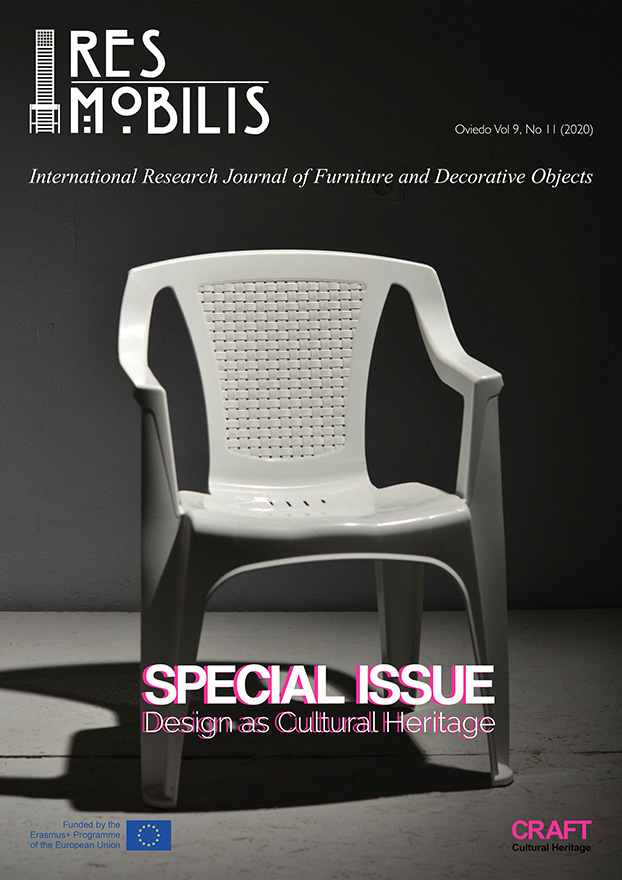Abstract
To understand the present and prepare for the future, we must remember our past. - And as indicated with the writings of 19th century English art critic and writer, John Ruskin; material cultural heritage holds an important lesson and plays an ethical role in establishing such a remembrance. With this paper, we discuss examples of implementing storytelling as a creative-explorative teaching method to critically reflect on- and develop the awareness and understanding of material cultural heritage among students from disciplines of Art History, Architecture, and Design. Our examples stem from a workshop held during the International Art Biennale in Venice 2019 by the Erasmus+ interdisciplinary research projectCRAFT.
References
Chipperfield, David. “Restorations and Reconstructions: Reflections on Berlin”. In From Postwar to Postmodern – 20th Century Built Cultural Heritage The 6th Baltic Sea Region Cultural Heritage Forum: Conference Proceedings, edited by Maria Rossipal, 21-27. Stockholm: Riksantikvarieämbetet, 2017.
Cosgrove, Denis E.” John Ruskin and the Geographical Imagination”. Geographical Review 69, no. 1 (1979): 43-62.
Cosgrove, Denis E. “The Myth and Stones of Venice: an Historical Geography of a Symbolic Landscape”. Journal of Historical Geography 8, no. 2 (1982): 145-169.
Cullen, Gordon. The Concise Townscape. London: Architectural Press, 1962.
Fisker, Anna Marie and Christensen, Jeppe Heden. “The Architecture of the ‘Monobloc’ and its Potential of Initiating a New Interdisciplinary Educational Concept for Cultural Diversity”. In Le Vie dei Mercanti: World Heritage and Legacy, edited by A. Ciambrone, 62. Gangemi Editore, 2019.
Jacob, Sam. ”Opening the Black Box - AA Night School”. In: Froud, Daisy & Harriss, Harriet Radical Pedagogies - Architectural Education and the British Tradition, 174-179. Newcastle: RIBA Publishing, 2015.
Kite, Stephen. “Watchful Wandering: John Ruskin’s Strayings in Venice”. Journal of Architectural Education 64, no. 4 (2009): 105-114.
Lynch, Kevin. The Image of The City. Boston: The MIT Press, 1960.
National Storytelling Network. ”What is Storytelling”. Accessed June 10, 2020. https://storynet.org/what-is-storytelling/.
Relph, Edward. "Modernity and the Reclamation of Place". In Dwelling, Seeing, And Designing: Toward a Phenomenological Ecology, edited by David Seamon, 25-40. Albany: State University of New York, 1996.
Staiff, Russell. “Narratives and Narrativity: the Story is the Thing”. In Re-imagining Heritage Interpretation: Enchanting the Past-Future, 95-116. England: Ashgate, 2014.
Tvedebrink, Tenna Doktor Olsen, Bagger, Nini Camila, Fisker, Anna Marie and Heilmann, Anna Eva Utke. “Tales of Past Tables: Karen Blixen´s Storytelling as a Foundation for a New Narrative Design Tool”. In Back to the Future: The Future in the Past. ICDHS 10th+1 Barcelona, Conference proceedings Book, 554-558. Barcelona: Editions de la Universitat de Barcelona, 2018.
Tvedebrink, Tenna Doktor Olsen and Jelic, Andrea. “Getting Under the(ir) Skin: Applying Personas and Scenarios with Body-environment Research for Improved Understanding of Users' Perspective in Architectural Design“. Persona Studies 4, no. 2 (November 2018): 5-24.
Tvedebrink, Tenna Doktor Olsen and Fisker, Anna Marie. “Recalling the Past: through an Interdisciplinary and Problem Based Learning Environment”. In REcall-European Conflict Archaeological Landscape Reappropriation: REcall Book, edited by M. Bassanelli, V. Gravano, G. Grechi and G. Postiglione, 21-31. Milano: Politecnico di Milano, 2014.
Tvedebrink, Tenna Doktor Olsen et. al. CRAFT - Workshop Art Biennale: Poster Booklet. Department of Civil Engineering: Aalborg University, 2019.


